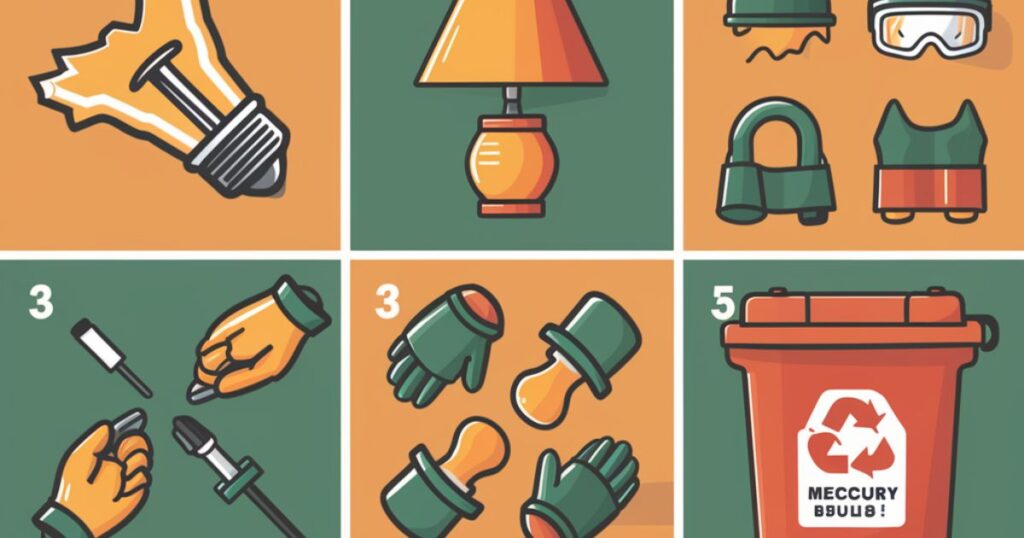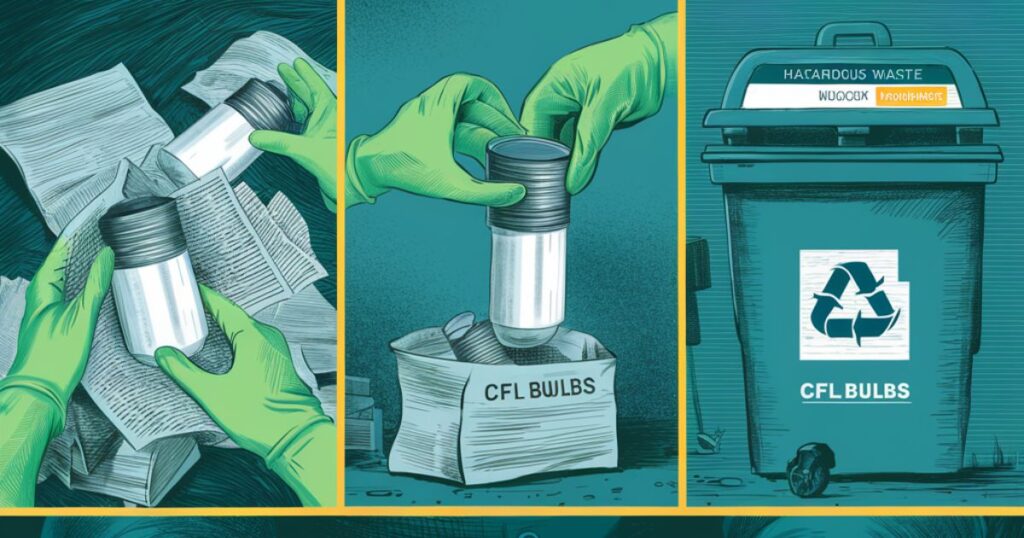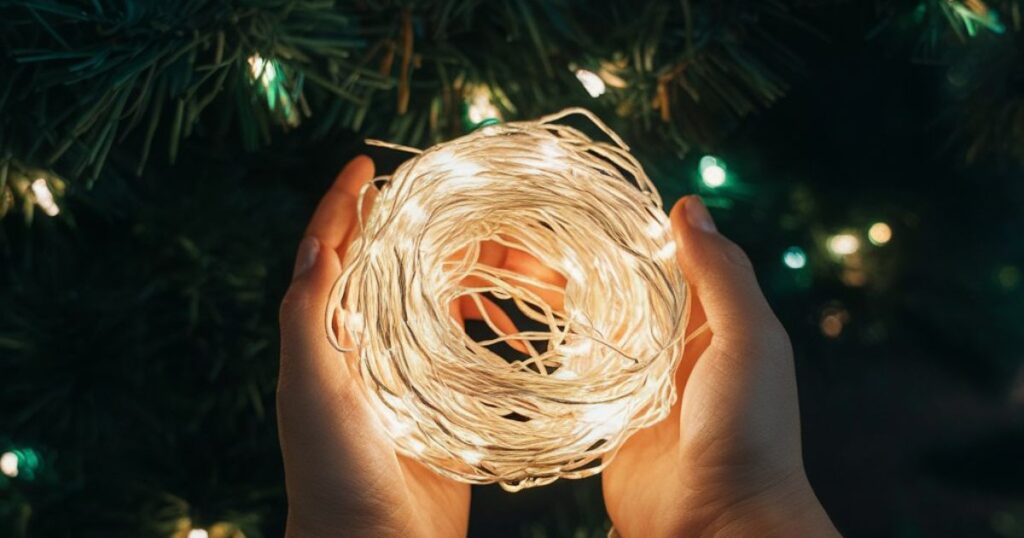LED bulbs have rapidly grown in popularity due to their energy efficiency and long lifespan. But even these modern marvels eventually burn out. When that happens, proper disposal is crucial to protect the environment and human health. This comprehensive guide covers how to responsibly dispose of not just LED bulbs, but all major types of light bulbs.
How to Dispose of LED Bulbs
The good news is that light-emitting diode (LED) bulbs can typically be disposed of in your regular household trash or garbage. Unlike compact fluorescent lights (CFLs) and fluorescent tubes, LED bulbs do not contain mercury, so they are not considered hazardous waste.
LED bulbs do contain small amounts of other metals like lead and arsenic in their circuit boards. So while not mandatory, it’s always a good idea to check if your local recycling program accepts LED bulbs for proper processing and recovery of these materials.
To dispose of LEDs in the trash:
- Do not break or crush the bulbs
- Place the entire bulb into a plastic bag or wrap in newspaper
- Put the wrapped bulb in your regular trash bin
This protects the bulb from breaking and releasing any tiny fragments during collection. LED bulbs are made of durable components like aluminum and plastic, so they are unlikely to shatter if disposed of intact.
How to Dispose of Incandescent Bulbs and Lamps

Traditional incandescent bulbs are also safe to dispose of in your regular trash service. Most curbside recycling programs do not recycle incandescent bulbs, as they have low amounts of recyclable materials.
Incandescents can be identified by their glowing wire filament inside the glass bulb. As an extra precaution, you can wrap them in paper or plastic bags before putting in the trash. This contains any small pieces if the bulb happens to break.
Read More : How Long Do Led Lights Last?
How to Dispose of Halogen Bulbs
Halogen bulbs can go in regular household trash in most areas, but be sure to check local requirements first. Some municipal programs require halogens to be recycled instead of landfilled.
Common halogen uses include:
- Vehicle headlights
- Outdoor floodlights
- Indoor recessed lighting
- Under-cabinet lighting
- Workshop lights
Since halogens burn extremely hot, place spent bulbs in a paper or plastic bag before disposal to prevent fire hazards. Do not put loose halogen bulbs into your curbside recycling bin.
How to Dispose of Fluorescent Light Tubes
Fluorescent tubes require special handling and must be recycled at approved facilities – do not put them in the regular trash or recycling bin. These long glass tubes contain a small amount of mercury vapor, classified as a toxic substance.
| Fluorescent Tube Length | Approx. Mercury Content |
| 4 feet | 8 mg |
| 8 feet | 16 mg |
While the mercury levels are low, it can accumulate over time and cause health and environmental issues. Most municipal household hazardous waste programs and recyclers accept fluorescent tubes.
How to Dispose of CFL Bulbs

Like fluorescent tubes, compact fluorescent lights (CFLs) contain mercury and must be recycled through proper channels. Never dispose of intact or broken CFLs in your household trash.
The spiral or twisted shape distinguishes CFLs from traditional bulbs. They also remain cool to the touch when operating. CFLs use 25-35% of the energy consumed by incandescents and last 10x longer.
CFLs are one of the easiest ways for homeowners and businesses to save energy and fight climate change.” – Energy Star
Recycling is required due to the 4-5 mg of mercury present in each CFL bulb. Many retailers like Home Depot, Lowe’s and Ikea accept used CFLs for recycling. You can also leverage mail-back recycling programs.
How to Dispose of Broken CFL or Fluorescent Tubes
Dealing with a broken CFL or fluorescent tube requires extra care since the mercury could become airborne and create exposure risks. Follow these key steps:
- Ventilate the area by opening windows
- Evacuate the room for at least 15 minutes to allow particles to settle
- Remove all materials you can without vacuum (glass, powder, etc.)
- Scoop up remaining debris using stiff paper/cardboard
- Wipe area with damp paper towels to remove residue
- Place all debris and cleaning materials in air-tight bags
- Recycle bags at approved toxic waste facility
Wear protective gear like goggles and mask if possible when cleaning up a broken mercury-containing bulb. The vapors can be hazardous if inhaled.
How to Dispose of HID Bulbs
While less common residentially, high intensity discharge (HID) bulbs like those used for outdoor lighting, automotive lighting, and horticulture lamps also require proper disposal due to their mercury content.
HID bulb types include:
- High pressure sodium
- Mercury vapor
- Metal halide
- Xenon
- Ultraviolet (UV)
Never put spent HID bulbs in the regular trash. Wrap them loosely in plastic and recycle through your local household hazardous waste program or through mail-back services.
How to Dispose of String or Holiday Lights

String lights used for holiday decorations thankfully do not contain any toxic components. You can dispose of old, burned-out string lights in your regular household trash service once any plastic decorations or ornaments are removed.
Some recyclers may also accept string lights since they contain copper wiring that can be recovered and resmelted. Call ahead to see if your local recycling program takes holiday light strings.
Toxic Bulb Recycling Services
For mercury-containing bulbs like CFLs, fluorescent tubes, and HIDs that require special handling, there are a few main recycling options:
Local Household Hazardous Waste Collection Events: Many municipalities host periodic collection days, dropoffs, or other events for recycling toxic bulbs and other hazardous household items like paints, oils, and cleaners. These are typically free services for residents.
Retailer In-Store Recycling: Some home improvement stores and other retailers like Batteries Plus offer in-store recycling for CFLs, tubes, and other bulbs, sometimes for a small fee.
Mail-Back Recycling Programs: Companies like EcoLights, BulbCycle, and LampMaster provide mail-back kits or buckets. You load up the container with your spent bulbs and ship it back to their recycling facility for a fee.
Always check approved recyclers in your area, as requirements can vary. Properly recycling mercury-containing bulbs helps reduce pollution and conserve resources.
Conclusion
With so many light bulb types and disposal requirements, it can seem daunting to ensure you’re disposing of them properly. But taking a few simple precautions makes a big difference. Contain LEDs, incandescents, and halogens before putting them in the trash. And make the effort to recycle mercury-containing CFLs, fluorescent tubes, and HIDs through approved facilities.
Embracing responsible disposal protects the environment and keeps hazardous materials out of landfills. Whether you’re upgrading light fixtures or just changing a burned-out bulb, keep this guide handy. Refer back to the specifics for each bulb type so you can continue enjoying energy-efficient lighting while doing your part for the planet.
FAQs
How can the LED bulbs be disposed of scientifically?
LED bulbs can be disposed of scientifically by taking them to designated recycling centers or electronics recycling facilities for proper handling.
Can I put light bulbs in the recycling bin?
No, light bulbs should not be put in the recycling bin; they need to be taken to specific recycling facilities to avoid contamination.
How can the LED bulbs be disposed?
LED bulbs can be disposed of by following local regulations, typically involving taking them to designated recycling centers or hazardous waste disposal sites.













